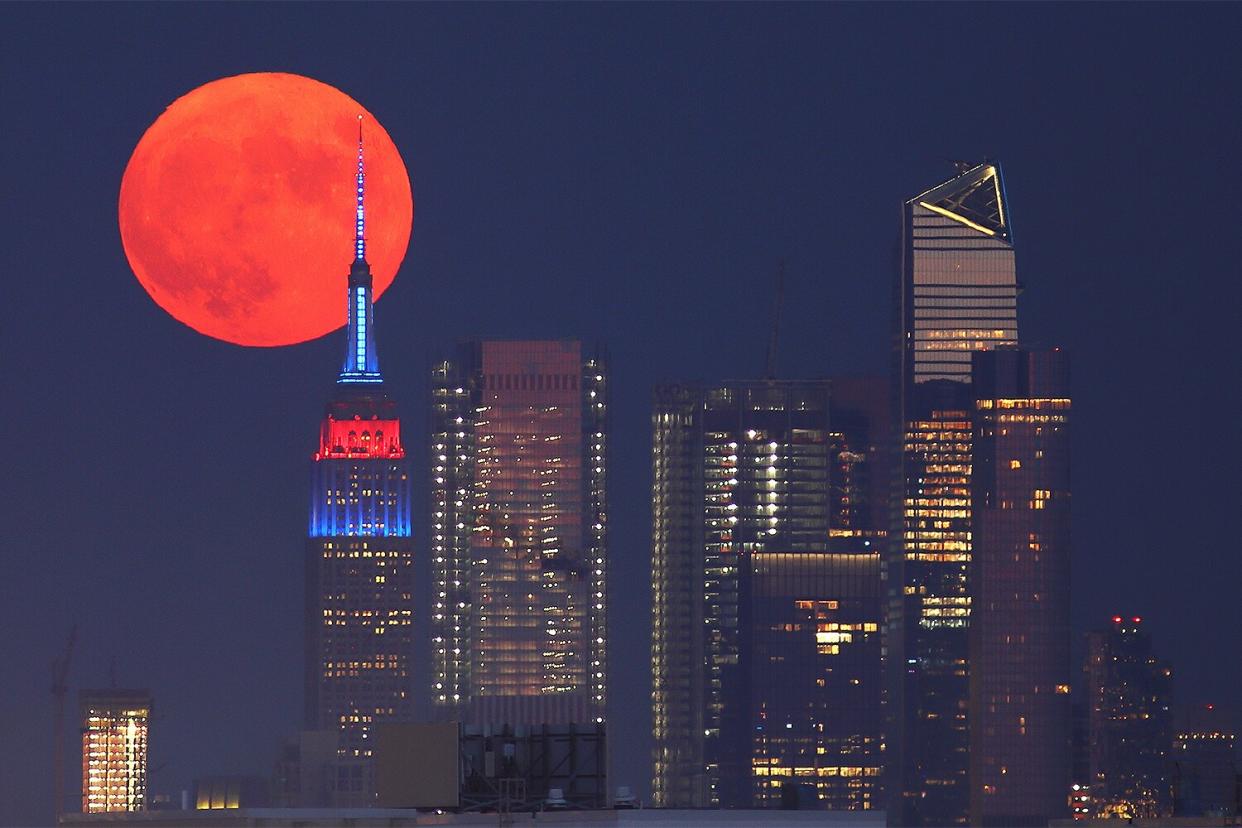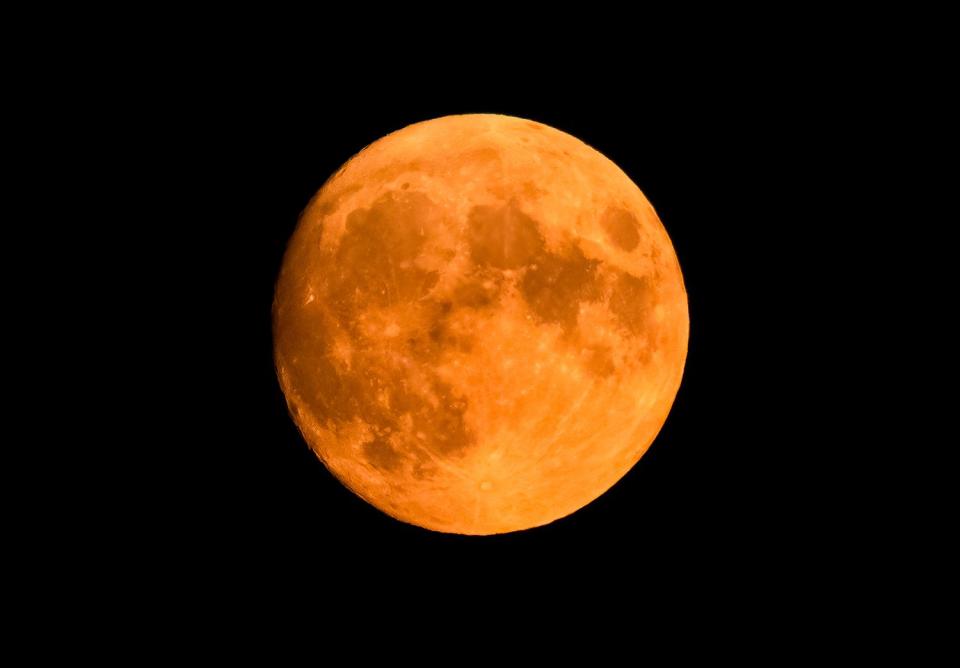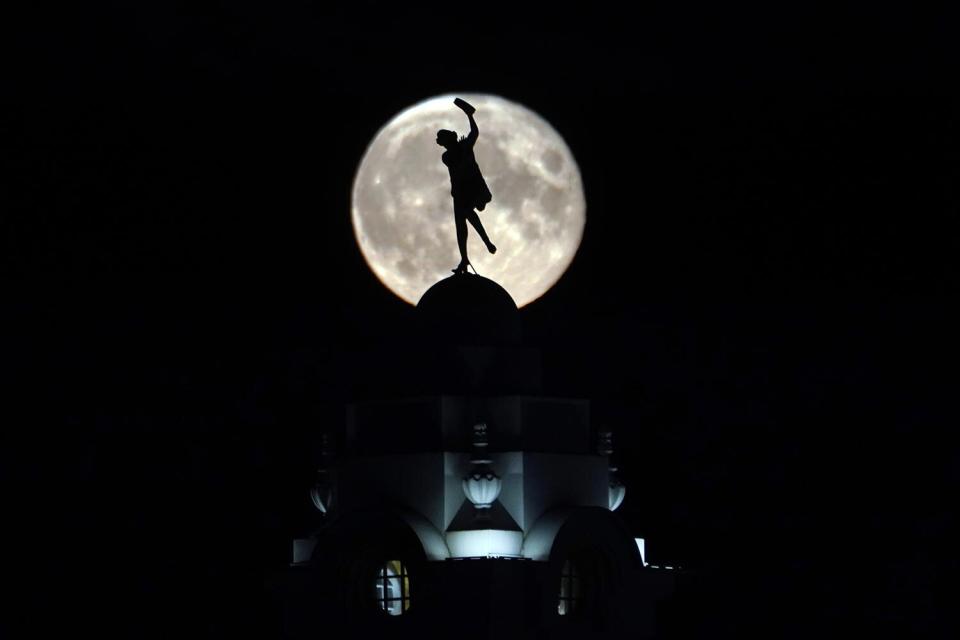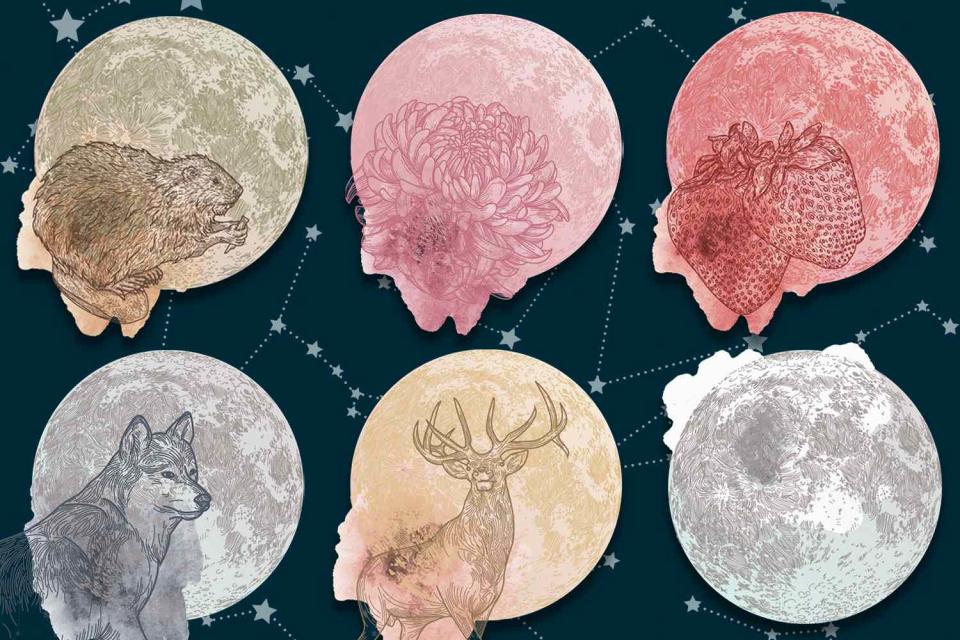Everything to Know About July's Buck Moon, the Biggest Supermoon of the Year

Gary Hershorn/Getty
July is giving us another reason to point our eyes to the sky.
While fireworks have come and gone, it's time to look up once again as this month's full moon is upon us — and it's going to be super!
Known as the Buck Moon, July's full moon is set to rise on Wednesday, July 13. The celestial spectacle is going to be quite the event because the natural satellite is expected to reach its nearest point to Earth.
Due to its close proximity to our planet, the big bright orb has been labeled a supermoon and will orbit closest to Earth compared to any other full moon this year, according to the Farmer's Almanac. The best part? No binoculars or telescopes are needed to view this fantastic phenomenon!
July's Buck Moon comes after the Strawberry Moon, which peaked on June 14. That full moon also coincided with a supermoon, marking the second one of 2022.
Here are all the details on this month's full moon, including when to spot it, why it's called the Buck Moon, and everything in between.
RELATED: Everything to Know About the Full Moons in 2022
Why is July's full moon called the Buck Moon?

Getty
Like many other full moons, July's Buck Moon derives from Native Americans who first published its name in the Maine Farmer's Almanac in the 1930s.
"According to this almanac, as the full moon in July – the Algonquin tribes in what is now the northeastern United States called this full moon the Buck Moon," per NASA. "Early summer is normally when the new antlers of buck deer push out of their foreheads in coatings of velvety fur. They also called this the Thunder Moon because of early summer's frequent thunderstorms."
In addition to "Buck," other titles for this moon include "Thunder Moon," "Mead Moon," and "Hay Moon." Europeans recognize this month's full moon as the latter because haymaking typically takes place in June and July, NASA noted.
What makes July's Buck Moon a supermoon?
July's Buck Moon is simultaneously a supermoon because of its close proximity to Earth, appearing bigger and brighter than an average full moon. Specifically, the illuminating orb will reach a perigee distance (point nearest to Earth) of 221,994 miles away, according to Space.com.
Though the spectacle will seem grand to skywatchers, it's technically only going to be about 14% larger. This small increase in size won't cause a perceptible difference to the naked eye, but will still be fun to know you are staring at the best supermoon of the year.
RELATED: See All of the Super Flower Blood Moon Photos from Around the World
When to view July's Buck Moon?

Owen Humphreys/PA Images via Getty The Buck Moon rises in England
July's Buck Moon will reach its peak illumination at 5:00 a.m. ET on July 13, but won't turn full until nine hours and 37 minutes later. Although 2:37 p.m. ET on Wednesday will be when the moon is at its fullest phase, it will not be visible at that time.
Lunar lookers should step out to spot it when it rises above the horizon later in the evening. To determine when to catch a glimpse of the full moon in your location, check out the Farmer's Almanac "Moonset and Moonrise Calculator."
If you can't get an outside view or your sky conditions are cloudy, the Virtual Telescope Project is hosting a livestream starting at 4:00 p.m. ET on July 14.
"We will admire our satellite rising above the skyline of Rome, the Eternal City, hanging above its legendary monuments," project founder Gianluca Masi wrote in a statement.
When's the next supermoon in 2022?

Getty
The next supermoon is set to rise on Thursday, Aug. 11 and it will be the last one of 2022.
RELATED: See All of the Super Flower Blood Moon Photos from Around the World
When's the next full moon in 2022?
August's full moon is called the Sturgeon Moon and will coincide with the supermoon on Thursday, Aug. 11, 2022. It's named after a fish called a sturgeon, which was readily caught during that time of year in the Great Lakes and Lake Champlain.

